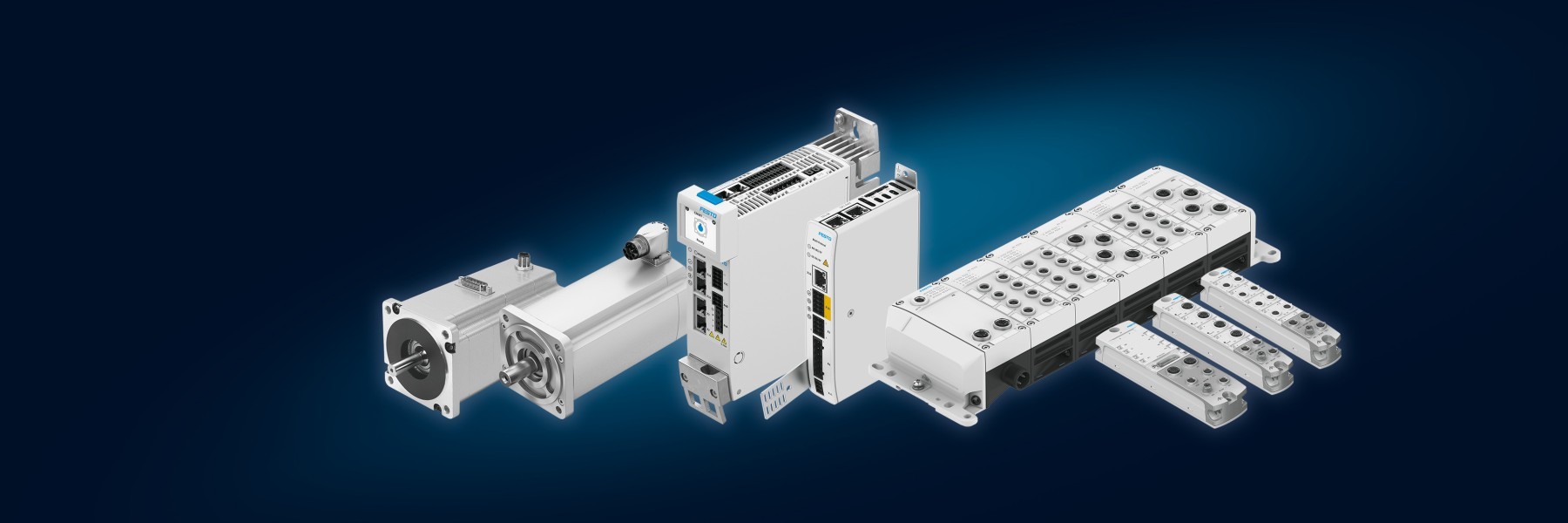Electric automation: Driving industrial efficiency
What is electric automation?
Electric automation leverages electrically controlled systems to optimize manufacturing and industrial processes. It enables automatic machine operation, real-time data analysis, and advanced process control, enhancing efficiency, productivity, and safety.
By integrating AI-driven analytics, motion control, and smart connectivity, electric automation reduces manual intervention, optimizes energy use, and enhances precision. Unlike mechanical or hydraulic systems, it seamlessly connects with Industry 4.0 technologies, enabling predictive maintenance, real-time monitoring, and remote optimization.
Its ability to ensure production consistency, minimize downtime, and support smart manufacturing makes it a key driver of competitiveness, sustainability, and efficiency in modern industries.
Unlocking the benefits of electric automation
Electric automation empowers businesses—both SMBs and large enterprises—to streamline operations with scalable, cost-effective, and energy-efficient solutions. By leveraging modular frameworks and cloud-based control, companies can enhance plant infrastructure while maximizing output.
- Energy efficiency: Uses less power than hydraulic or pneumatic systems, with intelligent energy management reducing waste and costs.
- Workplace safety: Reduces human exposure to risks through robotics, real-time monitoring, and fail-safe automation.
- Predictive maintenance: AI-powered analytics detect failures before they occur, reducing downtime and extending equipment lifespan.
- Workforce optimization: Shifts manual labor toward high-value roles, such as programming, system supervision, and process optimization.
- Sustainability: Lowers energy consumption, material waste, and emissions, supporting environmentally responsible operations.
As industries embrace Industry 4.0, electric automation remains essential for improving efficiency, sustainability, and competitiveness.
Cartesian handling systems - a technical comparison with conventional robots
Why is it worthwhile to use Cartesian handling systems?
The trend in conventional assembly and handling solutions is moving from robots to energy-efficient and cost-optimized systems. And no wonder, conventional robot solutions are too large-scale for many applications and frequently offer more functions and degrees of freedom than are actually required.
Energy-efficient and cost-optimized 2D and 3D systems - whether in a technology mix with electrical and pneumatic components or components that are purely pneumatic, purely electrical - can be adapted more easily and efficiently to linear and rotational applications. Optimizations in mechanical systems, procurement, programming and installation space can be exploited more effectively.
This white paper contains information on:
- Cartesian handling systems in an overview
- Functional differences between the various systems
- Key factors and selection aids for selecting a handling system
White paper: Robots
There's one for every job - How to choose the right one
In the popular imagination, robots are large, dumb machines for doing dull, muscular, repetitive tasks with precision and accuracy. That’s only part of today’s robotics world. Robots now come in many sizes and configurations, with two to seven axes. They can do simple or complicated work, even surgery. For both factory and process automation, there’s one to suit just about any application or budget – anywhere productivity can be enhanced by automating the movement of tooling or payloads, or performing production tasks better or faster. Payloads can be anything from computer chips weighing a gram to locomotive wheelsets weighing over a ton.
This white paper provides information on:
- Automation 3.0: History of robotics
- Different types of robot technologies
- Benefits and limitations of each technology
- Factors to consider in selecting the right robot for the job
Seamless connectivity
Benefit from an integrated range of solutions from Festo: from mechanics to complete servo drive systems, state-of-the-art communication and control concepts to digitalization with suitable Cloud solutions – supplemented by innovative software solutions for engineering, configuration and commissioning.
Automate everything that moves, on a single unified platform.
Always stay flexible with Festo, because you determine yourself the extent to which you automate with us and which of our products you use in conjunction with your in-house standards – now and in the future.
Mechanical Connectivity
Regardless of whether it involves linear movement, rotation, gripping or stopping: our electromechanical axes and modules leave nothing to be desired and can be used to achieve virtually every common automation task in machines and systems – perfectly coordinated with our servomotors or your in-house standard.
Electrical Connectivity
Easily connect your mechanics and control technology with our servo drives and servo motors. Profit from simple engineering, perfectly coordinated hardware and complete flexibility thanks to direct integration into virtually any automation environment – including commissioning with just a few steps in the Festo Automation Suite software.
Intelligent Connectivity
Benefit from free, diverse communication and direct, complete integration into higher-level control concepts. Make your automation solutions more flexible and modular with comprehensive, decentralized motion control solutions from Festo – supported by innovative software solutions.
Building a fully connected automation dystem
Seamless connectivity between machines, sensors, and control systems is critical for modern automation, ensuring real-time process adjustments, remote diagnostics, and optimized data collection. Open communication protocols enhance operational flexibility and scalability, allowing businesses to adapt to evolving demands.
Software solutions play a vital role in driving efficiency. Tools like Festo Automation Suite simplify system configuration, monitoring, and maintenance. AI-driven enhancements further improve motion control, reduce energy consumption, and ensure consistency. Investing in intelligent automation software is key to long-term reliability and operational excellence.
Our highlight products in electric automation
Installation and control concepts influence each other. This means that automation architectures have to be cleverly networked to achieve seamless connectivity. Hardware and software work together intelligently on the Festo Automation Platform – a perfect and seamless combination of controller, servo drive and mechanics. The wide range of mechanical systems offers a solution for virtually any motion requirement. And the Festo Automation Suite software ensures quick and perfect commissioning of all electrical and mechanical hardware components.
Digital Engineering Tools
With our online engineering tools, you can design your solution easily and reliably, regardless of your level of expertise. They allow you to quickly create a valid configuration, precisely select components, create the required documentation, and perform necessary calculations. And get your solution up and running in just a few steps. Why not take a look at the overview right now and find the right tool to make your everyday work easier.
From actual practice

Learn how your machines can benefit from electric motion with how-to-webinars. Watch a demonstration on various electric motion engineering tools and feel empowered to commission your own projects. Simply register for any of the webinars to gain instant access to watch.
Register here: Festo's Power Up Webinar Series
From actual practice
Important Downloadable Brochures and Flyers
FAQs - frequently asked questions explained easily
What is Electric Automation?
Electric automation refers to the application of electrically controlled systems in industrial settings to manage and optimize manufacturing processes. It utilizes sensors, actuators, and Programmable Logic Controllers (PLCs) to enhance efficiency, reduce costs, and improve operational safety.
From automotive assembly to electronics manufacturing, electric automation ensures precision in repetitive tasks while enabling seamless integration with smart factory technologies.
What are the fundamentals of electric automation?
Electric automation relies on core principles such as:
- Control systems: Using PLCs, sensors, and actuators for automated operation.
- Power management: Enhancing energy efficiency with intelligent power distribution.
- Data-driven decision-making: Real-time monitoring and analytics for predictive maintenance.
Integration with industrial networks ensures seamless data exchange, improving performance and reliability.
What are the advantages of Electric Automation?
Electric automation enhances industrial efficiency by:
- Optimizing workflows and reducing downtime.
- Improving product quality through precise, repeatable processes.
- Minimizing energy consumption for sustainable operations.
- Increasing workplace safety by limiting human interaction in hazardous environments.
- Enabling remote monitoring and predictive maintenance.
How does Electric Automation compare to Pneumatic and Hydraulic Automation?
Each automation type serves distinct industrial needs:
- Electric Automation: Utilizes motors, PLCs, and sensors for precise control and digital integration. Common in robotics, high-speed electronics manufacturing, and assembly lines.
- Pneumatic Automation: Uses compressed air for actuation, making it fast and cost-effective for packaging and lightweight handling.
- Hydraulic Automation: Operates through fluid pressure, offering high force output for heavy-duty applications such as metal stamping and construction machinery.
What is the difference between Electric and Electronic Automation?
- Electric Automation focuses on the industrial-scale control of machinery and processes using electric power.
- Electronic Automation leverages microcontrollers and digital control systems for adaptive and complex automation, often seen in smart devices and advanced robotics.
How does AI enhance Electric Automation?
AI-powered automation improves efficiency by enabling:
- Smart decision-making and predictive maintenance.
- Machine learning-based optimization for real-time adjustments.
- Enhanced human-machine collaboration for intuitive operation and automated troubleshooting.
How does Electric Automation support Industry 4.0?
Electric automation is fundamental to Industry 4.0, enabling interconnected, data-driven manufacturing ecosystems. Its key contributions include:
- Predictive analytics for improved efficiency.
- Flexible, scalable systems for dynamic production needs.
- Seamless IoT and cloud-based integration for real-time monitoring.
What does an Electric Automation Engineer do?
Electric automation engineers design, implement, and maintain industrial automation systems. Their responsibilities include:
- Programming PLCs and motion control systems.
- Integrating sensors and actuators for optimized processes.
- Troubleshooting and enhancing system performance.
- Implementing AI, IoT, and cloud-based solutions for smart automation.
Which industries benefit most from Electric Automation?
Electric automation is transforming key sectors, including:
- Manufacturing: CNC machining, robotic assembly, and process automation.
- Automotive: Quality control, welding automation, and precision painting.
- Food & beverage: Automated packaging, temperature control, and hygiene compliance.
- Pharmaceuticals: Precision dosing, sterilization, and regulatory compliance.
- Logistics & warehousing: Automated sorting, conveyor systems, and AGVs (Autonomous Guided Vehicles).
What role do PLCs and motion control systems play in automation?
PLCs provide programmable, real-time control over machinery, ensuring precise sequencing and adjustments. Motion control systems regulate automated equipment movement for accuracy in tasks like:
- Robotic assembly
- CNC machining
- Automated material handling
